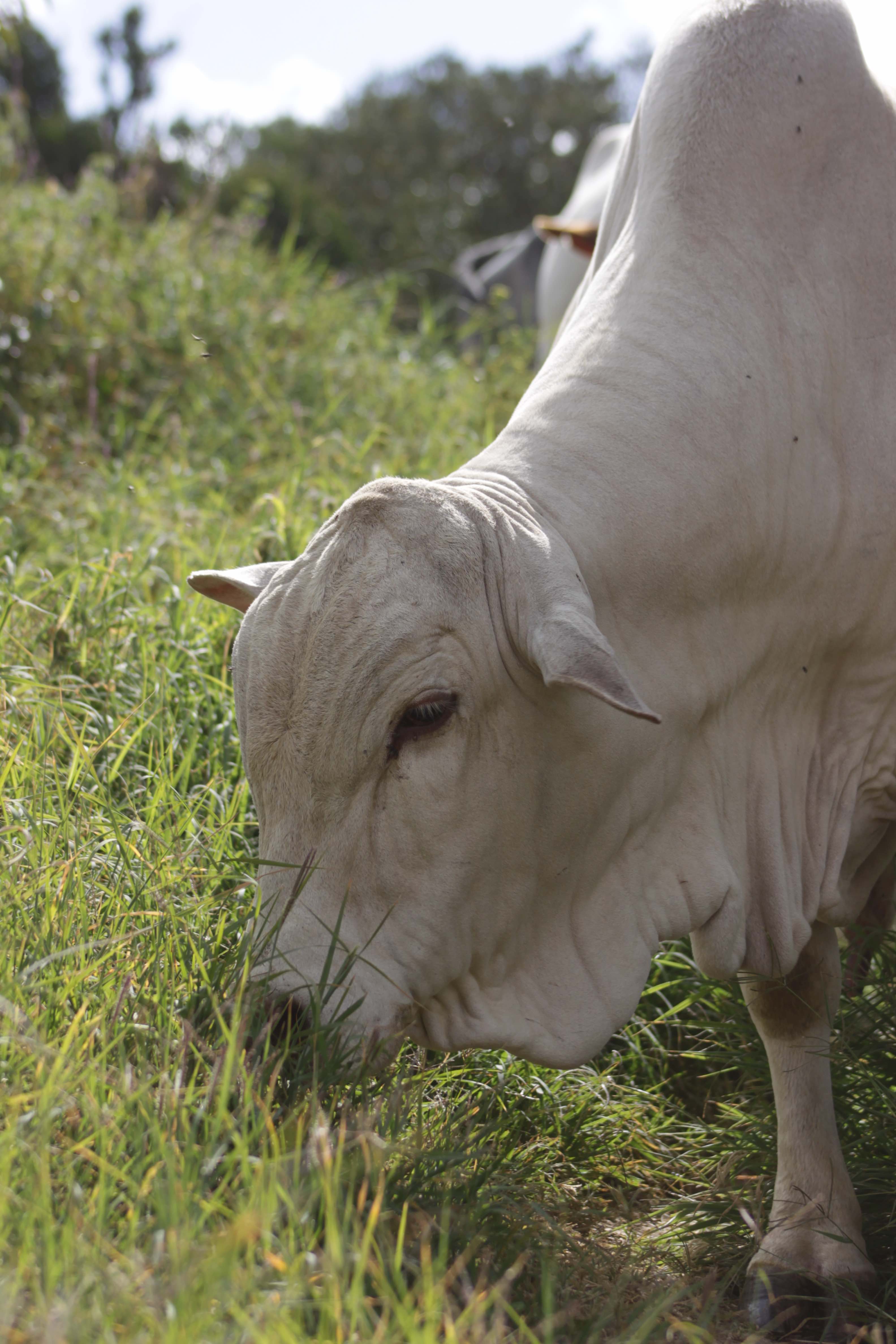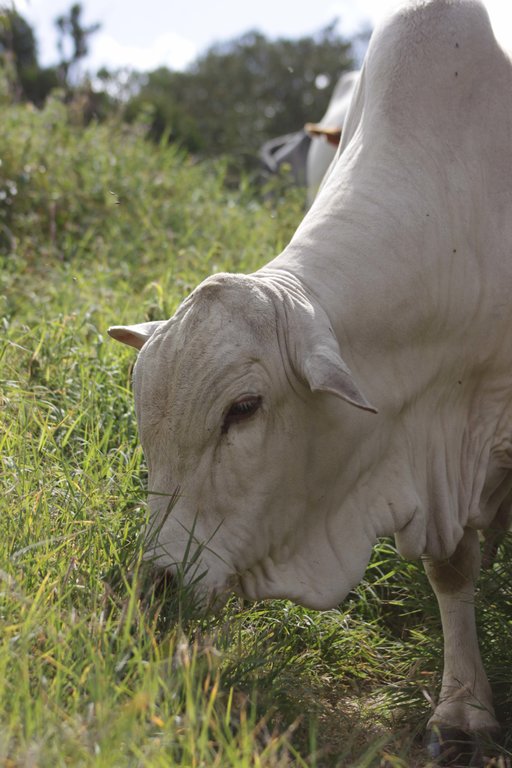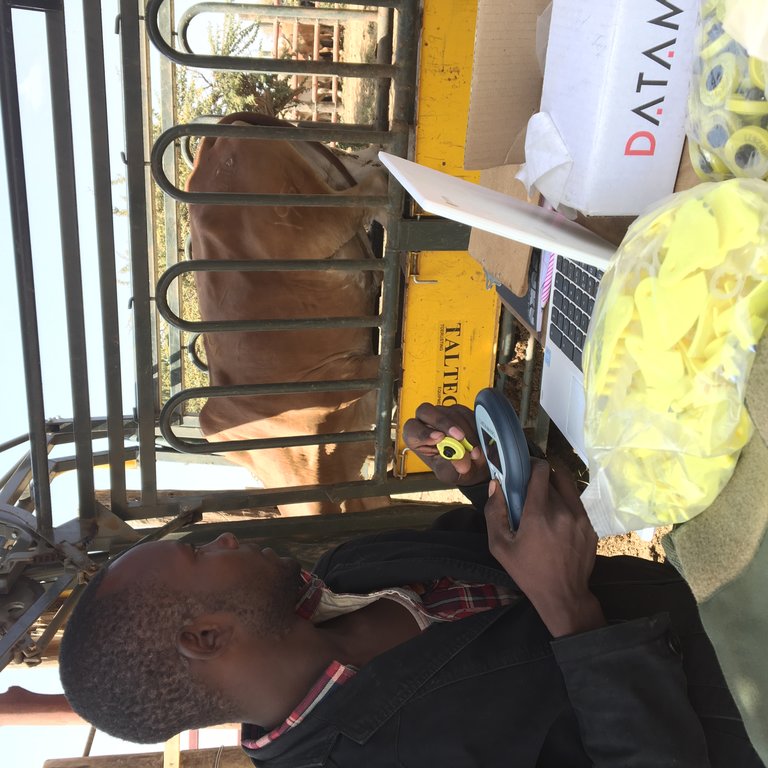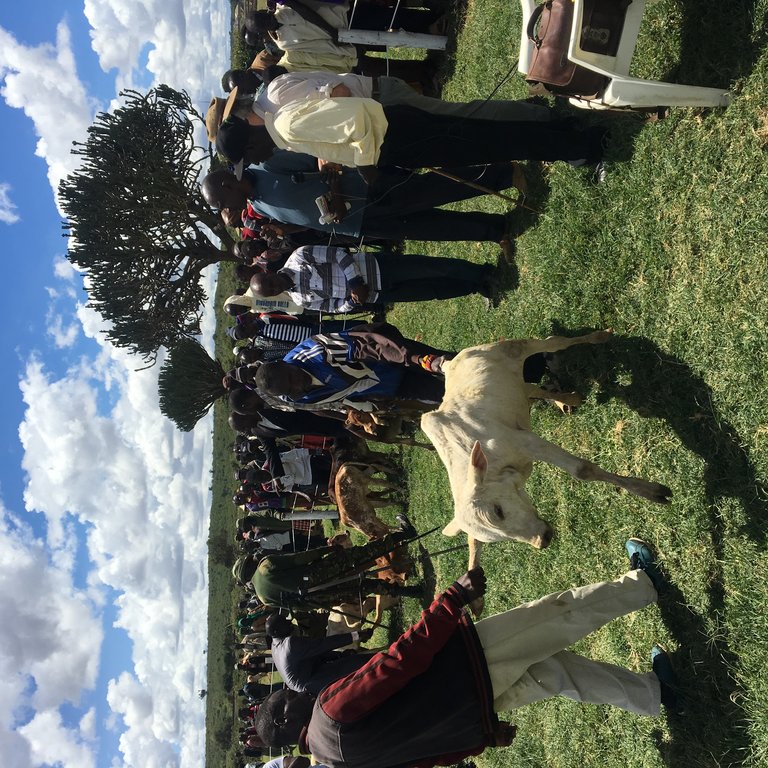Mugie Resource Sharing and Livestock to Markets Program [ប្រទេសកេនយ៉ា]
- ការបង្កើត៖
- បច្ចុប្បន្នភាព
- អ្នកចងក្រង៖ Peter Tyrrell
- អ្នកកែសម្រួល៖ Henry Bailey
- អ្នកត្រួតពិនិត្យច្រើនទៀត៖ Hanspeter Liniger, Rima Mekdaschi Studer, Donia Mühlematter, Joana Eichenberger
Mugie Trading Stock (MTS)
approaches_3427 - ប្រទេសកេនយ៉ា
ពិនិត្យមើលគ្រប់ផ្នែក
ពង្រីកមើលទាំងអស់ បង្រួមទាំងអស់1. ព័ត៌មានទូទៅ
1.2 ព័ត៌មានលម្អិតពីបុគ្គលសំខាន់ៗ និងស្ថាប័នដែលចូលរួមក្នុងការវាយតម្លៃ និងចងក្រងឯកសារនៃវិធីសាស្ត្រផ្សព្វផ្សាយ
បុគ្គលសំខាន់ម្នាក់ (ច្រើននាក់)
អ្នកប្រើប្រាស់ដី:
ប្រទេសកេនយ៉ា
ឈ្មោះគម្រោងដែលបានចងក្រងឯកសារ/ វាយតម្លៃលើវិធីសាស្ត្រផ្សព្វផ្សាយ (បើទាក់ទង)
Book project: Guidelines to Rangeland Management in Sub-Saharan Africa (Rangeland Management)1.3 លក្ខខណ្ឌទាក់ទងទៅនឹងការប្រើប្រាស់ទិន្នន័យដែលបានចងក្រងតាមរយៈវ៉ូខេត
តើពេលណាដែលទិន្នន័យបានចងក្រង (នៅទីវាល)?
26/03/2018
អ្នកចងក្រង និង(បុគ្គលសំខាន់ៗ)យល់ព្រមទទួលយកនូវលក្ខខណ្ឌនានាទាក់ទងទៅនឹងការប្រើប្រាស់ទិន្នន័យដែលបានចងក្រងតាមរយៈ វ៉ូខេត:
បាទ/ចា៎
2. ការពណ៌នាអំពីវិធីសាស្ត្រផ្សព្វផ្សាយ SLM
2.1 ពណ៌នាសង្ខេបខ្លីពីវិធីសាស្ត្រផ្សព្វផ្សាយ
Selected livestock are bought from the communities, then fattened and marketed by the Mugie conservancy management on a ‘resource sharing’ basis – generating income for both the conservancy and the community. This encourages the development of local value chains and market-based incentives for better rangeland management and animal husbandry outside the conservancy area. Breeding, agricultural shows and on-going education in sustainable rangeland management provide support for the longer-term.
2.2 ពណ៌នាលម្អិតពិវិធីសាស្ត្រផ្សព្វផ្សាយ
ពណ៌នាលម្អិតពិវិធីសាស្ត្រផ្សព្វផ្សាយ:
Mugie conservancy is a private company covering nearly 20,000 hectares. It is involved in ecotourism, wildlife conservation and livestock production. Simultaneously, Mugie cooperates with community members surrounding the conservancy by fattening and marketing their cattle. Both parties share in the risks and successes of the initiative – and this is key to building trust. Community livestock owners ‘resource share’ in the program by supplying selected animals in line with standards and a quota stipulated by the conservancy. Currently the cattle are weighed and graded at the conservancy headquarters, but a purpose-built facility on the edge of the conservancy is being constructed for this purpose.
While the conservancy manages the livestock from the community, there is a joint stake in the livestock as the eventual profits are divided. The conservancy takes over full management of the livestock from the community members including herding and grazing, dipping, providing veterinary treatment, monitoring weight, marketing and sales. The division and remittance of funds generated is according to the contract agreed with the community committee. Contracts vary in nature and are often no more than just verbal agreements based on trust. The original owners have visiting rights on Saturdays during weighing and the spray-race, where they inspect their animals and interact with conservancy livestock staff.
The program aims to build value chains, encourage livestock businesses and the local economy through provision of a fair price market for local communities’ products. It also strives to build peace across communities and ethnicities - there is no room for fighting when talking business. Developing market-based incentives to produce better quality livestock is another aim, thus stimulating improved rangeland management and a higher standard of animal husbandry. It is also hoped to build a sustainable livestock business for the conservancy to pay for its wildlife and biodiversity conservation efforts - because conservation doesn’t pay for itself and tourism is volatile, and can’t cover conservations costs in most situations.
The total turnover of the program to-date (April 2018) is approx. US $ 825,000. The conservancy takes 10% of the sales, plus US $ 4.00 per animal per month to cover grazing, animal health and management. Cattle are sold live to various brokers and dealers, depending on the market conditions and the quality of the cattle.
This process of community participation and partnership building is nurtured and reinforced in various ways: (i) through continuous outdoor meetings (updates on changes needed to agreements; requirements for livestock; updating on conditions of the market; talking about the need to maintain a supply of high quality livestock through better rangeland management, etc.); (ii) by development of community committees; (iii) establishing community SACCOs (co-operatives registered with the county government); and (iv) drawing up contracts between the committees and the conservancy.
The implementation of this approach is an ongoing, dynamic and ever-evolving process. However the broad sequence is as follows: (i) introduction of the approach to communities, encouraging them to embrace the idea of improving livestock quality and to enter into an agreement with the conservancy, (ii) formation of committees within the community to ensure that livestock owners are heard and can agree the value of livestock, as well as avenues for communication, complaints and negotiations, (iii) negotiation of contracts with these committees, covering revenue sharing and proposed number of livestock involved, (iv) livestock management, fattening and marketing by Mugie conservancy, (v) continuous monitoring and reviews.
As implementation progresses there are also breeding schemes to introduce better genetic material into community livestock. These improved breeds produce cattle of higher quality for the beef market. Ongoing education and an annual agricultural show increase the potential and awareness of sustainable range management approaches and opportunities to all members of surrounding communities, including livestock producers: men, women and the youth.
2.3 រូបភាពនៃវិធីសាស្ត្រផ្សព្វផ្សាយ
2.5 ប្រទេស/តំបន់/ទីតាំងកន្លែង ដែលវិធីសាស្ត្រផ្សព្វផ្សាយត្រូវបានអនុវត្តន៍
ប្រទេស:
ប្រទេសកេនយ៉ា
តំបន់/រដ្ឋ/ខេត្ត:
Laikipia
បញ្ជាក់បន្ថែមពីលក្ខណៈនៃទីតាំង:
Louniek region
2.6 កាលបរិច្ឆេទនៃការចាប់ផ្តើម និងបញ្ចប់នៃវិធីសាស្រ្តផ្សព្វផ្សាយនេះ
សូមបញ្ជាក់ឆ្នាំដែលបានបង្កើតឡើង:
2017
ប្រសិនអត់ចាំឆ្នាំ សូមចង្អុលបង្ហាញកាលបរិច្ឆេទប្រហែលៗពេលដែលវិធីសាស្ត្រផ្សព្វផ្សាយត្រូវបានចាប់ផ្តើមប្រើ:
តិចជាង 10ឆ្នាំមុន (ថ្មី)
2.7 ប្រភេទនៃវិធីសាស្ត្រផ្សព្វផ្សាយ
- អ្នកផ្តួចផ្តើមក្នុងតំបន់/អ្នករុករកឃើញថ្មីៗ
2.8 គោលបំណង/ទិសដៅសំខាន់នៃវិធីសាស្ត្រផ្សព្វផ្សាយ
1. Promote peace & stability
2. Incentivise and educate in sustainable rangeland management and use of natural resources
3. Provide local market opportunities
4. Encourage and educate in responsible livestock production in rural areas
5. Encourage local economic growth
6. Ensure sustainable food production
7. Encourage the formation of strong institutions in the area (such as co-operatives, businesses and business-orientated group ranches)
2.9 លក្ខខណ្ឌអនុញ្ញាត ឬរារាំងការអនុវត្តន៍បច្ចេកទេសដែលស្ថិតនៅក្រោមវិធីសាស្រ្តផ្សព្វផ្សាយ
សង្គម/វប្បធម៌/ និងតម្លៃនៃសាសនា
- អំណោយផល
The use of traditional structures of elders is a great help in bringing members of local communities on board with the program, especially within the Pokot ethnic group.
- រារាំង
Traditional social structures amongst pastoralist communities are commonly collapsing, and therefore the prevailing social norm is for people to try to benefit themselves rather than helping the community at large. Moreover, traditional social structures are dominated by men. Most approaches target elders and warrior age sets to try and distribute knowledge of rangeland management and therefore they do not reach those actually doing the majority of animal husbandry work and having the greatest impact upon the rangelands and biodiversity - namely the women and children.
ភាពអាចរកបាននៃធនធានហិរញ្ញវត្ថុ និងសេវាកម្ម
- អំណោយផល
There has been an initial boost in the area from some banking services to help communities open bank accounts, and encourage the formation of cooperatives. Using these institutions greatly reduces the burden of program administration.
- រារាំង
The majority of people in the area do not have local access to financial institutions. This creates a problem, as without the foundation of trust/insurance that financial services bring, facilitating sustainable trade, community members don't have the will or ability to invest in productive activities such as sustainable rangeland management and animal husbandry.
ក្របខណ្ឌច្បាប់ (សិទ្ធិកាន់កាប់ដីធ្លី កម្មសិទ្ធីប្រើប្រាស់ដីនិងទឹក)
- រារាំង
The sub-division of historical ranches in the area has been done on a scale that creates blocks that are too small (12-20 hectare plots) for sustainable livestock activities to be supported. Most of these do not have their own sources of water and this sub-division of the landscape means the greater area is not being managed to maintain essential ecosystem services such as the preservation of groundwater, soils, native forest or grassland biodiversity.
គោលនយោបាយ
- អំណោយផល
The 'Amaya Initiative' that has been set up by the current Governor of Laikipia to boost cooperation between between regional county governments has had initial successes in assisting the project through increased security and encouraging peace and stability. It has yet to provide other enabling functions such as control of cattle movement to prevent disease, encouraging/facilitating markets, etc.
អភិបាលកិច្ចដី (ការសម្រេចចិត្ត ការអនុវត្ត និងការរឹតបន្តឹង)
- រារាំង
The lack of law enforcement controlling the movement of livestock hinders efforts to implement value adding techniques and approaches in sustainable rangeland management and associated livestock management approaches through disease, livestock theft, and unregulated utilisation of natural resources. The lack of enforcement of laws supporting the rights of landowners and businesses discourages investment on any scale. The penalties for transgressing some of these laws are also very weak and not commensurate with the risks that their breaches pose to landowners.
ចំណេះដឹងស្តីពី SLM និងការទទួលបានការគាំទ្រផ្នែកបច្ចេកទេស
- រារាំង
The basic understanding of lifecycles of common wild fodder plants is lacking. This means that the majority of community led initiatives to manage natural resources and mitigate against climate based crises cause more harm to sustainable land management efforts in the medium to long term.
ទីផ្សារ (ទិញធាតុចូល លក់ផលិតផល) និងតម្លៃ
- រារាំង
Poor market access makes it difficult to sustain the program across all the potential revenue situations. There are good markets for well-finished livestock. However, culled cows, for instance, cannot be sold - and these continue to drain resources, both financial and natural. Institutions with large contracts that could provide offtake for such animals do not offer market prices that are sustainable for local businesses. The development of local infrastructure in marketing inputs (medicines, feeds, supplements, extension services, etc.), and value chain addition (slaughter houses, canning factories, cold chain storage, etc.) would help break apparent monopolies that seem to be retarding local markets.
ទំហំការងារ ភាពអាចរកបាននៃកម្លាំងពលកម្ម
- រារាំង
There is a lack of availability of manpower with the correct skills and training in administration and management and with an understanding and willingness to work in the agricultural sector.
ផ្សេងៗ
- រារាំង
Availability of seed funds to encourage entrepreneurship and development of local businesses. Most funds seem to be channelled through NGOs who have an aversion to partnership in commercial ventures. Many training sessions that are run by NGOs in surrounding pastoralist areas, when discussing potential stakeholders, rarely mention local businesses. This serves to develop societies and communities reliant on handouts, unwilling to develop their local value chains. The prevailing NGO, development and aid attitude that avoids large for-profit businesses needs to change. Such businesses can be a lynchpin in regional value chains that encourage sustainable approaches, as they guarantee local supply chains and local customer bases, raising local economies, peace and strong institutions.
3. ការចូលរួម និងតួនាទីរបស់ភាគីពាក់ព័ន្ធ
3.1 អ្នកពាក់ព័ន្ធដែលបានចូលរួមក្នុងវិធីសាស្ត្រផ្សព្វផ្សាយ និងតួនាទីរបស់ពួកគេ
- អ្នកប្រើប្រាស់ដីក្នុងតំបន់/សហគមន៍
Land and livestock owners from the immediate area surrounding the private conservancy (from the Pokot, Samburu & Turkana tribes).
Local land users/communities make committees to allocate quotas of livestock to come in to the MTS resource sharing and livestock-to-market program. It is also their responsibility to continue to bring suitable animals for the program. The committees are those to communicate changes and updates to the terms of agreement to the wider community and to help mediate in disputes.
- អង្គការសហគមន៍មូលដ្ឋាន
Chemiot SACCO - a Pokot youth cooperative set up in the wake of starting the MTS scheme.
Mugie wishes to encourage the development of strong institutions in the area. Mugie hopes increasingly to deal with SACCOs as opposed to committees.
- អ្នកឯកទេសគ្រប់គ្រងដីប្រកបដោយចីរភាព/ទីប្រឹក្សាបច្ចេកទេសកសិកម្ម
RPLRP (Regional Pastoralist Livelihoods Resilience Program) and NDMA (National Drought Management Authority).
Currently, these stakeholders have shown an interest in the project and wish to see how it can be scaled up.
- អ្នកស្រាវជ្រាវ
Masters and Doctorate students
There has been a little interest from these stakeholders in using the information and databases developed by Mugie. However there has been no feedback and little uptake from them.
- វិស័យឯកជន
Mugie Conservancy, various Mugie Trade partners.
To manage the livestock, to finish (fatten) them for the market, market the livestock, remit funds from sales, manage the contracts, provide education on improved rangeland management and animal husbandry. Trade partners provide other inputs and access to markets.
- រដ្ឋាភិបាលថ្នាក់មូលដ្ឋាន
Laikipia County Government, Samburu County Government, Baringo County Government
The respective county governments have shown interest in supporting and further developing the MTS program in order to help develop strong institutions, economy, businesses opportunities and rehabilitate rangelands for better livelihoods in the Amaya Triangle area.
ប្រសិនមានភាគីពាក់ព័ន្ធច្រើនចូលរួមសូមចង្អុលបង្ហាញភ្នាក់ងារដែលនាំមុខគេ:
Mugie Conservancy
3.2 ការចូលរួមរបស់អ្នកប្រើប្រាស់ដីក្នុងតំបន់/ សហគមន៍ក្នុងតំបន់ក្នុងដំណាក់កាលផ្សេងគ្នានៃវិធីសាស្រ្តផ្សព្វផ្សាយ
| ការចូលរួមរបស់អ្នកប្រើប្រាស់ដីក្នុងតំបន់/សហគមន៍ក្នុងតំបន់ | សូមបញ្ជាក់នរណាត្រូវបានចូលរួម ព្រមទាំងពណ៌នាសកម្មភាពទាំងនោះ | |
|---|---|---|
| ការចាប់ផ្តើម/ការលើកទឹកចិត្ត | អន្តរកម្ម | Both Mugie conservancy and local land users were involved in negotiations over the period of conflict around the 2017 Kenya presidential elections - out of this innovative resource sharing approaches were developed to benefit all stakeholders. |
| ការរៀបចំផែនការ | អន្តរកម្ម | Community leaders were presented with the options and limitations by Mugie management. Committees were then formed under several different themes, and they then negotiated contracts. |
| ការអនុវត្តន៍ | អន្តរកម្ម | Community committees continue to be the main point of contact as the program develops organically, balancing the market, environment and needs of various stakeholders. However, the main implementer continues to be Mugie but with integrated community support. Changes in the market are seeing more individual community members using the scheme to market livestock themselves without Mugie involvement, but using the reputation of the brand. |
| ការត្រួតពិនិត្យ និងវាយតម្លៃ | អន្តរកម្ម | Communities raise problems that occur and work hand in hand with Mugie management to resolve issues. |
3.4 ការសម្រេចចិត្តលើការជ្រើសរើសបច្ចេកទេស SLM
សូមបញ្ជាក់តើអ្នកណាជាអ្នកបានសម្រេចចិត្តក្នុងការជ្រើសរើសបច្ចេកទេសដើម្បីយកមកអនុវត្តន៍:
- អ្នកជំនាញឯកទេស SLM បន្ទាប់ពីបានប្រឹក្សាយោបល់ជាមួយអ្នកប្រើប្រាស់ដី
ចូរពន្យល់:
Mugie handles the administration of the program and therefore decides on what technologies best fit their management requirements. Communities are always consulted on all changes and developments of the program.
សូមបញ្ជាក់ តើការសម្រេចធ្វើឡើងដោយផ្អែកលើអ្វីជាមូលដ្ឋាន:
- វាយតម្លៃទៅលើចំណេះដឹងស្តីអំពី SLM ដែលបានចងក្រងជាឯកសារបានត្រឹមត្រូវ (ផ្អែកលើភស្តុតាងជាមូលដ្ឋានដើម្បីសម្រេចចិត្ត)
- លទ្ធផលបានពីការស្រាវជ្រាវ
- បទពិសោធន៍ និងគំនិតផ្ទាល់ខ្លួន(ពុំមានចងក្រងជាឯកសារ)
4. ជំនួយបច្ចេកទេស ការកសាងសមត្ថភាព និងការគ្រប់គ្រងចំណេះដឹង
4.1 ការកសាងសមត្ថភាព/ បណ្តុះបណ្តាល
តើវគ្គបណ្តុះបណ្តាលបានផ្តល់ឱ្យអ្នកប្រើប្រាស់ដី/អ្នកពាក់ព័ន្ធផ្សេងៗទៀតដែរឬទេ?
បាទ/ចា៎
សូមបញ្ជាក់តើអ្នកណាត្រូវបានបណ្តុះបណ្តាល:
- អ្នកប្រើប្រាស់ដី
- បុគ្គលិកចុះទីវាល/អ្នកផ្តល់ប្រឹក្សាយោបល់
ទម្រង់នៃការបណ្តុះបណ្តាល:
- អនុវត្តន៍ជាមួយការងារ
- ពីកសិករទីកសិករ
- ទីតាំងបង្ហាញ
- ការប្រជុំជាសាធារណៈ
ប្រធានបទបណ្តុះបណ្តាល:
Grazing management, rangeland management (planning), Lifecycles of plants, water cycling, solar cycling, mineral cycling, importance of suitable breeds, market awareness, forming (SACCO), Basic business planning.
4.2 សេវាផ្តល់ប្រឹក្សាយោបល់
តើអ្នកប្រើប្រាស់ដីបានទទួលនូវសេវាផ្តល់ប្រឹក្សាដែរ ឬទេ?
ទេ
4.3 ការពង្រឹងសមត្ថភាពស្ថាប័ន (ការអភិរឌ្ឍន៍អង្គភាព)
តើស្ថាប័នទាំងអស់ត្រូវបានបង្កើតឡើង ឬពង្រឹងសមត្ថភាពតាមរយៈវិធីសាស្ត្រផ្សព្វផ្សាយដែរ ឬទេ?
- បាទ/ច៎ា ជាមធ្យម
សូមបញ្ជាក់ថាតើស្ថាប័នត្រូវបានពង្រឹង ឬបង្កើតឡើងនៅត្រឹមកម្រិតណា(ច្រើន)?
- ថ្នាក់មូលដ្ឋាន
- កម្រិតថ្នាក់តំបន់
ចូពណ៌នាពីស្ថាប័ន តួនាទី និងទំនួលខុសត្រូវ សមាជិក ។ល។:
Cooperatives (SACCOs), Community Conservancies, Local businesses.
សូមបញ្ជាក់ប្រភេទនៃការគាំទ្រ:
- ការកសាងសមត្ថភាព/ បណ្តុះបណ្តាល
4.4 ការត្រួតពិនិត្យ និងវាយតម្លៃ
តើការត្រួតពិនិត្យ និងវាយតម្លៃគឺជាផ្នែកមួយនៃវិធីសាស្ត្រដែរឬទេ?
បាទ/ចា៎
ប្រសិន បាទ/ច៎ា តើឯកសារនេះបានបង្កើតឡើងក្នុងគោលបំណងប្រើប្រាស់សម្រាប់ការត្រួតពិនិត្យ និងវាយតម្លៃដែរឬទេ?
បាទ/ចា៎
4.5 ការស្រាវជ្រាវ
តើការស្រាវជ្រាវ គឺជាផ្នែកមួយនៃវិធីសាស្រ្តដែរឬទេ?
បាទ/ចា៎
បញ្ជាក់ប្រធានបទ:
- សង្គមវិទ្យា
- សេដ្ឋកិច្ច/ទីផ្សារ
- បរិស្ថានវិទ្យា
- បច្ចេកវិទ្យា
សូមផ្តល់ព័ត៌មានបន្ថែមទៀតឱ្យបានលម្អិត និងចង្អុលបង្ហាញនរណាដែលបានធ្វើការស្រាវជ្រាវ:
Project developers from Mugie.
5. ថវិកា និងសម្ភារៈឧបត្ថម្ភពីខាងក្រៅ
5.1 ថវិកាប្រចាំឆ្នាំសម្រាប់ផ្សព្វផ្សាយ SLM
ប្រសិនបើចំនួនពិតប្រាកដនៃថវិកាប្រចាំឆ្នាំមិនត្រូវបានដឹងច្បាស់ សូមប្រាប់ពីចន្លោះនៃថវិកានោះ:
- 2,000-10,000
មតិយោបល់ (ឧ. ប្រភពសំខាន់នៃមូលនិធិ/ម្ចាស់ជំនួយចំបង):
All funding presently from Mugie. The program could be greatly improved with outside funding, donations or support.
5.2 ការគាំទ្រផ្នែកហិរញ្ញវត្ថុ / សម្ភារៈដែលបានផ្តល់ទៅឱ្យអ្នកប្រើប្រាស់ដី
តើអ្នកប្រើប្រាស់ដីបានទទួលការគាំទ្រផ្នែកហិរញ្ញវត្ថ/សម្ភារៈសម្រាប់ការអនុវត្តន៍បច្ចេកទេសដែរឬទេ:
ទេ
5.3 សូមបញ្ជាក់ពីធាតុចូលត្រូវបានផ្តល់បដិភាគ (រួមទាំងកម្លាំងពលកម្ម)
- សម្ភារៈ
| សូមបញ្ជាក់ ធាតុចូលណាខ្លះដែលបានផ្តល់បដិភាគ | កម្រិតទំហំប៉ុណ្ណា | សូមបញ្ជាក់ពីការបដិភាគ |
|---|---|---|
| ឧបករណ៍ | ផ្តល់ហិរញ្ញវត្ថុមួយផ្នែក | Microchipping for Electronic identification of cattle from Kenya Vetinary Association (KVA) |
ប្រសិនបើកម្លាំងពលកម្មធ្វើដោយអ្នកប្រើប្រាស់ដី តើវាជាធាតុចូលដ៏សំខាន់មួយដែរ ឬទេ:
- ដោយស្ម័គ្រចិត្ត
5.4 ឥណទាន
តើឥណទានដែលបានផ្តល់នៅក្រោមវិធីសាស្ត្រផ្សព្វផ្សាយសម្រាប់សកម្មភាព SLM នេះយ៉ាងដូចម្តេច?
ទេ
5.5 ការលើកទឹកចិត្ត ឬវិធីសាស្ត្រដ៏ទៃទៀត
តើមានការលើកទឹកចិត្តផ្សេងទៀត ឬឧបករណ៍ប្រើប្រាស់ដើម្បីលើកកម្ពស់ការអនុវត្តន៍បច្ចេកទេស SLM?
ទេ
6. ការវិភាគរកផលប៉ះពាល់ និងសេចក្តីសន្និដ្ឋាន
6.1 ផលប៉ះពាល់នៃវិធីសាស្ត្រផ្សព្វផ្សាយ
តើវិធីសាស្ត្រផ្សព្វផ្សាយបានផ្តល់សិទ្ធិអំណាចដល់អ្នកប្រើប្រាស់ដី ធ្វើឱ្យប្រសើរឡើងនូវការចួលរួមអ្នកពាក់ព័ន្ធ?
- ទេ
- បាទ/ច៎ា បន្តិចបន្តួច
- បាទ/ច៎ា ជាមធ្យម
- បាទ/ច៎ា បានខ្លាំង
Local landowners have a financial market based incentive to protect the main conservation area and increase/explore rehabilitation efforts on their own land.
តើវិធីសាស្រ្តផ្សព្វផ្សាយនេះអនុញ្ញាតឱ្យធ្វើការសម្រេចចិត្ដដោយផ្អែកលើភស្តុតាងជាមូលដ្ឋានដែរ ឬទេ?
- ទេ
- បាទ/ច៎ា បន្តិចបន្តួច
- បាទ/ច៎ា ជាមធ្យម
- បាទ/ច៎ា បានខ្លាំង
Detailed records were kept from the beginning and consulted as evidence for changes to the approach as the program developed
តើវិធីសាស្ត្រផ្សព្វផ្សាយជួយអ្នកប្រើប្រាស់ដីដើម្បីអនុវត្តន៍ និងថែទាំបច្ចេកទេស SLM?
- ទេ
- បាទ/ច៎ា បន្តិចបន្តួច
- បាទ/ច៎ា ជាមធ្យម
- បាទ/ច៎ា បានខ្លាំង
The program is still relatively new - but there has been strong evidence of changing attitudes towards better rangeland management.
តើវិធីសាស្រ្តផ្សព្វផ្សាយនេះធ្វើឱ្យប្រសើរឡើងនូវការសម្របសម្រួលនិងការអនុវត្តចំណាយរបស់ SLMមានប្រសិទ្ធិភាពបែបណា? :
- ទេ
- បាទ/ច៎ា បន្តិចបន្តួច
- បាទ/ច៎ា ជាមធ្យម
- បាទ/ច៎ា បានខ្លាំង
The proper management of cattle is helping to manage grasses and reduce the burden on overgrazed areas within the landscape.
តើវិធីសាស្រ្តផ្សព្វផ្សាយនេះប្រមូលផ្តុំ / ធ្វើឱ្យប្រសើរឡើងនូវការទទួលបានធនធានហិរញ្ញវត្ថុសម្រាប់ការអនុវត្ត SLM?
- ទេ
- បាទ/ច៎ា បន្តិចបន្តួច
- បាទ/ច៎ា ជាមធ្យម
- បាទ/ច៎ា បានខ្លាំង
Funding for this has yet to be provided for the area.
តើវិធីសាស្ត្រផ្សព្វផ្សាយនេះធ្វើឱ្យចំណេះដឹងប្រសើឡើង និងសមត្ថភាពរបស់អ្នកប្រើប្រាស់ដីក្នុងការអនុវត្តន៏ SLM?
- ទេ
- បាទ/ច៎ា បន្តិចបន្តួច
- បាទ/ច៎ា ជាមធ្យម
- បាទ/ច៎ា បានខ្លាំង
Considerable training has been carried out and discussions have been held with all of the communities surrounding the main conservation area of Mugie, greatly increasing their knowledge - capacity however relies upon security, access to market incentive to implement SLM and above all security of resources and land tenure.
តើវីធីសាស្ត្រផ្សព្វផ្សាយនេះពង្រឹងចំណេះដឹង និងកសាងសមត្ថភាពរបស់អ្នកពាក់ព័ន្ធឬទេ?
- ទេ
- បាទ/ច៎ា បន្តិចបន្តួច
- បាទ/ច៎ា ជាមធ្យម
- បាទ/ច៎ា បានខ្លាំង
Training of, and discussions with, other stakeholders have taken place too, raising wider awareness of the major issues and driving causes of rangeland degradation in the area.
តើវីធីសាស្ត្រនេះបានជួយកសាង/ពង្រឹងស្ថាប័ន កិច្ចសហប្រតិបត្តិការរវាងអ្នកពាក់ព័ន្ធដែរ ឬទេ?
- ទេ
- បាទ/ច៎ា បន្តិចបន្តួច
- បាទ/ច៎ា ជាមធ្យម
- បាទ/ច៎ា បានខ្លាំង
Yes, and continues to do so. The approach shows and provides a framework for further cooperation in economic development, peace building and education as well as sustainable land management and safeguarding of biodiversity.
តើវីធីសាស្ត្រផ្សព្វផ្សាយនេះបានកាត់បន្ថយជំលោះឬទេ?
- ទេ
- បាទ/ច៎ា បន្តិចបន្តួច
- បាទ/ច៎ា ជាមធ្យម
- បាទ/ច៎ា បានខ្លាំង
It has led to great stability in the area and opened up lines of dialogues between different communities, ethnicities, areas, and local government.
តើវិធីសាស្ត្រផ្សព្វផ្សាយនេះផ្តល់សិទ្ធិអំណាចដល់សង្គមនិងសេដ្ឋកិច្ចដែលក្រុមមិនទទួលបានផលប្រយោជន៍?
- ទេ
- បាទ/ច៎ា បន្តិចបន្តួច
- បាទ/ច៎ា ជាមធ្យម
- បាទ/ច៎ា បានខ្លាំង
The approach has allowed socially and economically disadvantaged groups to benefit from the administration and financial services from Mugie Conservancy and has enabled investments that have shown as much as 37% return on investments for socially and economically disadvantaged groups that otherwise would never have happened.
តើវិធីសាស្ត្រផ្សព្វផ្សាយ បានធ្វើឱ្យប្រសើរឡើងសមភាពយេនឌ័រ និងផ្តល់សិទិ្ធអំណាចដល់ស្ត្រី និងក្មេងស្រី?
- ទេ
- បាទ/ច៎ា បន្តិចបន្តួច
- បាទ/ច៎ា ជាមធ្យម
- បាទ/ច៎ា បានខ្លាំង
Although this impact has been small, now that trust with communities has been built, further resource sharing products are being developed within the approach to target these groups specifically.
តើវិធីសាស្ត្រផ្សព្វផ្សាយបានលើកទឹកចិត្តដល់អ្នកប្រើប្រាស់ដីដែលជាយុវជន/ក្មេងជំនាន់ក្រោយឱ្យចូលរួមក្នុង SLM ?
- ទេ
- បាទ/ច៎ា បន្តិចបន្តួច
- បាទ/ច៎ា ជាមធ្យម
- បាទ/ច៎ា បានខ្លាំង
The Mugie Rangeland and Pastoralist Show (an agricultural show for pastoralists) welcomes all the family and makes them aware of the issues and potential for change through SLM technologies and approaches.
តើវិធីសាស្ត្រផ្សព្វផ្សាយបានឱ្យប្រសើរឡើងនូវបញ្ហាកាន់កាប់ដីធ្លី/សិទ្ធិអ្នកប្រើប្រាស់ដែលរារាំងដល់ការអនុវត្ត SLM?
- ទេ
- បាទ/ច៎ា បន្តិចបន្តួច
- បាទ/ច៎ា ជាមធ្យម
- បាទ/ច៎ា បានខ្លាំង
This lies within the government's power to change. However, there is a lack of understanding of what the problem actually is, even from local and national government.
តើវិធីសាស្ត្រផ្សព្វផ្សាយនាំឱ្យប្រសើរឡើងនូវសន្តិសុខស្បៀង/ធ្វើឱ្យប្រសើរឡើងនូវអាហាររូបត្ថម្ភ?
- ទេ
- បាទ/ច៎ា បន្តិចបន្តួច
- បាទ/ច៎ា ជាមធ្យម
- បាទ/ច៎ា បានខ្លាំង
តើវិធីសាស្ត្រផ្សព្វផ្សាយធ្វើឱ្យប្រើសើរឡើងនូវការស្វែងរកទីផ្សារ?
- ទេ
- បាទ/ច៎ា បន្តិចបន្តួច
- បាទ/ច៎ា ជាមធ្យម
- បាទ/ច៎ា បានខ្លាំង
តើវិធីសាស្ត្រផ្សព្វផ្សាយនេះនាំឱ្យមានភាពប្រសើរឡើងក្នុងការទទួលបានទឹក និងអនាម័យ?
- ទេ
- បាទ/ច៎ា បន្តិចបន្តួច
- បាទ/ច៎ា ជាមធ្យម
- បាទ/ច៎ា បានខ្លាំង
Not yet, but as the approach goes forward. Those participating from more affluent social groups will be charged a premium. This will be used for extension services that improve these areas. Education is being given around the potential for communities to develop their own local water cooperatives.
តើវិធីសាស្ត្របានធ្វើឱ្យប្រសើរឡើងនូវការកសាងសមត្ថភាពរបស់អ្នកប្រើប្រាស់ដីដើម្បីបន្សុំាទៅនឹងការប្រែប្រួលអាកាសធាតុ/អាកាសធាតុក្តៅហែង និងកាត់បន្ថាយគ្រោះមហន្តរាយទាក់ទឹងនឹងអាកាសធាតុ?
- ទេ
- បាទ/ច៎ា បន្តិចបន្តួច
- បាទ/ច៎ា ជាមធ្យម
- បាទ/ច៎ា បានខ្លាំង
By providing basic financial services, land users can start guaranteeing funds and plans available for climate related disasters. The education and knowledge being provided also increases this capacity, and the off take of animals to finish on managed rangeland for market provides resilience all year round regardless of drought.
តើវិធីសាស្ត្រផ្សព្វផ្សាយនេះនាំឱ្យមានការងារ ឱកាសរកប្រាក់ចំណូល?
- ទេ
- បាទ/ច៎ា បន្តិចបន្តួច
- បាទ/ច៎ា ជាមធ្យម
- បាទ/ច៎ា បានខ្លាំង
There has been a huge injection of funds into the area through this approach. Employment has also increased through the scheme and can continue to do so as it grows.
6.2 ការលើកទឹកចិត្តចម្បងៗរបស់អ្នកប្រើប្រាស់ដីសម្រាប់ការអនុវត្តបច្ចេកទេស SLM
- បង្កើនផលិតកម្ម
- បង្កើនប្រាក់ចំណេញ (សមត្ថភាព) បង្កើនអត្រាចំណេញ
- ការកាត់បន្ថយការធ្លាក់ចុះគុណភាពដី
- កាត់បន្ថយហានិភ័យនៃគ្រោះមហន្តរាយ
- កិត្តិនាម សម្ពាធសង្គម/ការផ្សាភ្ជាប់ទៅនឹងសង្គម
- លើកកម្ពស់ចំណេះដឹង និងជំនាញ SLM
- ការកែលម្អសោភ័ណ្ឌភាព
- ការកាត់បន្ថយជម្លោះ
6.3 សកម្មភាពផ្សព្វផ្សាយដែលប្រកបដោយចីរភាព
តើអ្នកប្រើប្រាស់ដីអាចធ្វើឱ្យមានចីរភាពនូវអ្វីដែលត្រូវបានអនុវត្តន៍តាមរយៈវិធីសាស្ត្រផ្សព្វផ្សាយដែរឬទេ(ដោយពុំមានការគាំទ្រពីអ្នកខាងក្រៅ)?
- មិនប្រាកដ
ប្រសិន ទេ ឬមិនប្រាកដសូមបញ្ជាក់ និងពន្យល់:
At the time of writing the approach is still less than a year old and this remains to be seen.
6.4 ភាពខ្លាំង/ គុណសម្បត្តិនៃវិធីសាស្ត្រផ្សព្វផ្សាយ
| ភាពខ្លាំង/ គុណសម្បត្តិ/ ឱកាស ទស្សនៈរបស់អ្នកប្រើប្រាស់ដី |
|---|
| Benefits from the increase in the value of cattle. Few other livestock programs achieve this. |
| It has created peace in the area. |
| There are now opportunities for business growth opening up in the area. |
| ភាពខ្លាំង/ គុណសម្បត្តិ/ ឱកាស ទស្សនៈរបស់បុគ្គលសំខាន់ៗ |
|---|
| This is a key stepping stone in creating resilience in the area and rehabilitating degraded land through the financial market based incentives provided through the approach. |
| The approach has provided the necessary financial services and a sustainable road map forward to alleviate poverty through the changing of local attitudes from a wealth based society where the tragedy of the commons is degrading landscapes and societal structures, into a cash based society with strong institutions, a sustainable way of life and future. |
| Increase in peace and stability can further provide an incentive for local land users to invest in SLM practices and the return of biodiversity. |
6.5 ភាពខ្សោយ/ គុណវិបត្តិនៃវិធីសាស្ត្រ និងរកដំណោះស្រាយ
| ភាពខ្សោយ/ គុណវិបត្តិ/ ហានិភ័យ ទស្សនៈរបស់អ្នកប្រើប្រាស់ដី | តើបច្ចេកទេសទាំងនោះបានដោះស្រាយបញ្ហាដូចម្តេច? |
|---|---|
| Changeability of the market and lack of guaranteed prices. | Further banding together to guarantee good products (livestock) dependent upon sustainable rangeland management and agreed contracts with wholesalers. |
| Still a lack of good rangeland outside of the main conservation area of Mugie | Further increase stability and peace in the area and develop cooperatives of landowners who can rehabilitate and manage their land sustainably using economies of scale. This requires further guarantees of the markets and their products. |
| ភាពខ្សោយ/ គុណវិបត្តិ/ ហានិភ័យក្នុងទស្សនៈរបស់បុគ្គលសំខាន់ៗ | តើបច្ចេកទេសទាំងនោះបានដោះស្រាយបញ្ហាដូចម្តេច? |
|---|---|
| Administrative burden is huge and might prevent replication of the approach to organisations without a body of well-educated staff. | Development of a resource sharing management application (App). |
| Corruption in the markets and with large-scale contracts for livestock products |
7. ឯកសារយោង និងវេបសាយ
7.1 វិធីសាស្ត្រ/ ប្រភពនៃព័ត៌មាន
- តាមការចុះទីវាល ការស្រាវជ្រាវនៅទីវាល
4
- ការសម្ភាសន៍ជាមួយអ្នកប្រើប្រាស់ដី
Several hundred
- ការសម្ភាសន៍ជាមួយអ្នកជំនាញ/ ឯកទេស
- ការចងក្រងពីរបាកការណ៍ និងឯកសារផ្សេងៗទៀតដែលមាន
ការតភ្ជាប់ និងម៉ូឌុល
ពង្រីកមើលទាំងអស់ បង្រួមទាំងអស់ការតភ្ជាប់
គ្មានការតភ្ជាប់
ម៉ូឌុល
គ្មានម៉ូឌុល





